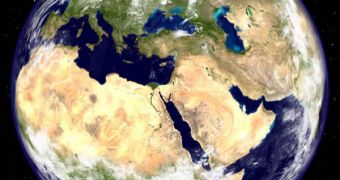We don't know when we will be able to cultivate bananas in the open in Alaska, but in New York it seems sooner than we might have thought.
A new research, published in "Nature Geoscience", points out that the Earth's tropics may have traveled northward in the past 30 years, more than global warming could have pushed them for the next century. If this proves to be for real and the pattern maintains, it could impact subtropical ecosystems, increase the spread of tropical diseases, and induce many unpleasant lifestyle changes to the population affected by these climatic changes.
The tropical zones make a 47?-latitude belt around the Earth's middle latitudes. The distribution of water, land, winds, and currents impacts the pattern of these warm climate areas.
Tropics take warm, moist air, from the equator, moving it toward the poles, booming temperatures in areas, such as most of Central and South America, central and southern Africa, Southeast Asia, and most of Australia.
But, global warming seems to be expanding the tropics, and computer models point out a movement of about 2? of latitude north and south, during the next 100 years.
In order to assess what has occurred until now, the team led by climate scientist Dian Seidel, of the National Oceanic and Atmospheric Administration in Silver Spring, Maryland, investigated stratosphere changes in the tropics, from 1979 to 2000, based on five sets of data gathered by satellites and weather balloons.
It appeared that tropical climate patterns, like higher ozone levels and temperatures, in the stratosphere have moved by up to 4.5? in the Northern Hemisphere, during that interval.
"The reason for the difference between the model predictions and the observed data could be that the models tend to concentrate on the lower atmosphere and Earth's surface, not on the interactions with the stratosphere. Although the changes there are indeed occurring, we don't know yet what that means for the surface," said Seidel.
This "makes a compelling case that the tropical belt has widened substantially over the past 30 years, and if it continues at the same rate, it will have major societal implications." said atmospheric scientist John Wallace, of the University of Washington, Seattle.

 14 DAY TRIAL //
14 DAY TRIAL //